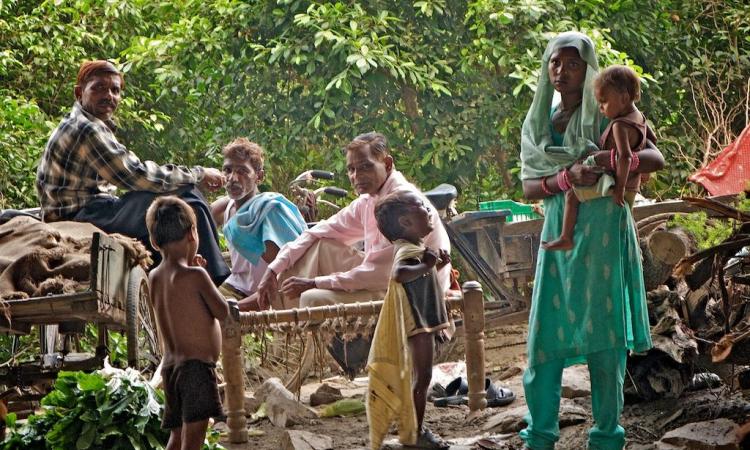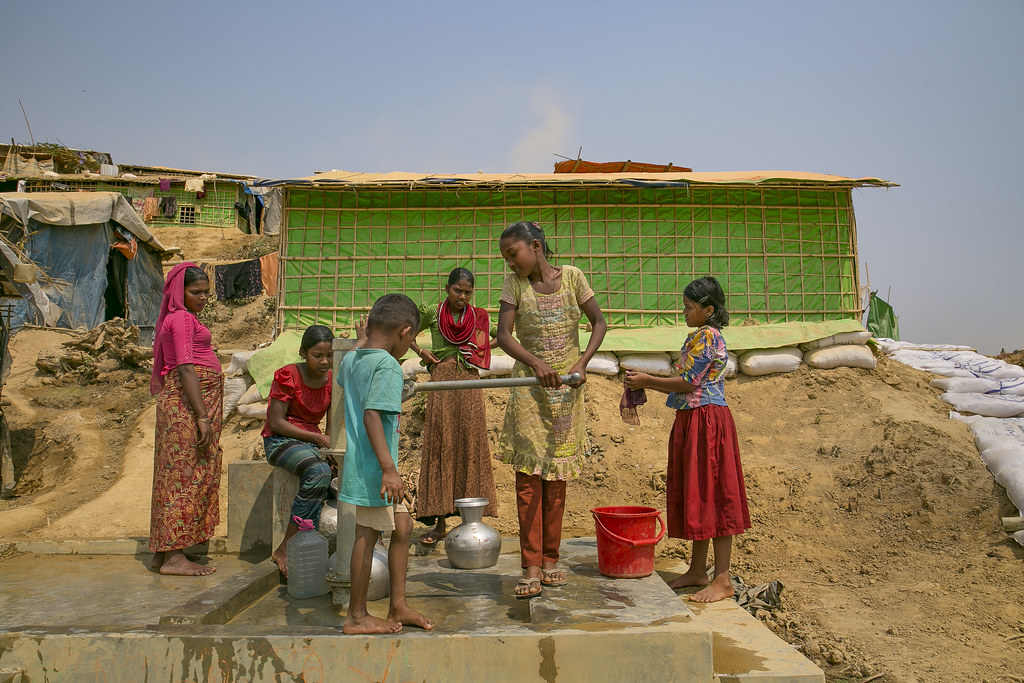
Climate change-related stressors that disrupt people’s lives to a large extent are emerging as the most important problem hindering the development of the Indian sub-continent. This is clearly visible in increasing occurrences of floods, for example, in Kerala, Assam and the Sundarbans region in the Indian sub-continent, and tsunamis in Sri Lanka, Bangladesh, and India.
Global reports claim that there is a 21% decrease in global farming productivity due to climate change. Thus, it becomes very important to engage deeply into this issue to build a constructive outlook. To deliberate upon this important and emerging global issue, the National Institute of Disaster Management (NIDM), Ministry of Home Affairs, Government of India in collaboration with the Impact and Policy Research Institute (IMPRI) organized a panel discussion on the topic ‘Climate migration in the Indian subcontinent' recently.
Dr Simi Mehta, CEO & Editorial Director, IMPRI, initiated the deliberation by underlining that climate change is real as glaciers are melting at a faster pace; the sea level is rising, and intense heat waves are common. Net damage costs of climate change are likely to increase.
“Climate change is leading to the displacement of the people which has led to the emergence of a new category called “climate migrants” which refers to people who have migrated due to the adverse effects of climate change and marked environmental disruption. Climate change is a hindrance to the ecological balance of the Indian sub-continent in the longer run,” said Dr Mehta.
Changing trends in climate-induced migration
“Disasters are aggravated by environmental degradation, increasing hazards, intensity and propensity. Disasters often create a long-term impact on the environmental ecosystem. Environmental concerns are jeopardised during disasters as the primary focus is on saving lives. Three types of environmental changes are important to understand. First is climate change, second is land-use change and third is natural resource degradation,” said Prof Anil K Gupta, NIDM, New Delhi.
Environmental migration has been known for ages. Civilizations evolved near water bodies, environmental dimensions have been closely associated with the rise and fall of civilisations.
“Migration is an important part of the modern human development era. The trend of migration has undergone tremendous change, i.e., the rate of migration has increased, newer places are emerging as hotspots, and there is additional pressure on development and governance. City resilience and governance need more attention. Migration is an additional disaster going on during COVID-19 as cities are becoming devoid of a workforce. Thus, a planned approach can be a way forward,” said Prof Gupta.
Prof R B Bhagat, Professor and Head, Department of Migration and Urban Studies, International Institute for Population Sciences (IIPS), Mumbai focused on the relationship between climate change and migration. “A lot of drivers are embedded in the process of climate change. Socio-economic drivers cannot be separated from the process. Various factors are interwoven together, for instance, poverty and employment,” said Prof Bhagat.
He enlisted forms of migration – forced and voluntary migration. He said that climate refugees should also be a part of the category of refugees. “Thus, it is important to understand mobility and de-mobility aspects. Seasonal migration is becoming more prominent among construction workers like the sugarcane migration, which is common in Uttar Pradesh and Bihar. Thus, central India is going to be directly affected by climate change and a majority of the tribal population inhabits it, which can also lead to conflicts,” said Prof Bhagat.
Climate change and human mobility: The case of Sri Lanka and Bangladesh
“Climate change is a shared problem of every country and the governments need to be sensitive towards the issue,” said Prof Rekha Nianthi, Professor, Department of Geography, University of Peradeniya, Sri Lanka.
She contextualised it in the Sri Lankan context by citing some relevant facts and data, i.e, Sri Lanka was ranked second among the countries affected by extreme weather events as per the Global Climate Risk Index 2019. The vulnerability exists both in terms of fatalities and economic losses. Consequently, there is an urgent need for sustainable global, country, and regional specific models.
Temperature is increasing, the intensity of droughts and floods, irregular changes in rainfall patterns; boundary shift in climatic zones is a point of concern. Mitigation, adaptation, loss, and damage need to be deeply focused upon as a means of implementation of climate justice.
In Sri Lanka, permanent migration is considered as the last adaptive response (i.e. landslide resettlements). Even for migration, people require some minimum resources and people lacking are not able to migrate. Thus, an integrated approach is required to build climate-resilient and healthy human settlements.
According to Prof Nianthi, timely intervention and robust policies are needed across the sectors. Government should focus on developing a partnership with financial institutions handling remittances to encourage such institutions to offer opportunities to vulnerable communities in order to build back better.
Sea level rise poses many challenges to coastal communities in particular and their livelihoods as it can lead to inland migration in the future. Proper adaptation can prevent loss and damages. The relationship between disaster and development needs more research. She concluded by asserting that migration can itself be an adaptation failure.
Prof Mizan R Khan, Deputy Director, International Centre for Climate Change and Development, (ICCCAD), Independent University, Bangladesh stated that borders are becoming less porous in the contemporary era. This is not only because of humanitarian crises but also due to so-called slow onset events induced by climate change. Prof Khan looked at the shifting global power dynamics in climate change politics, and how this affects our ability to achieve equitable and sustainable climate outcomes.
“How can we have planned relocation at borders instead of inequitable and scientifically inadequate responses to climate change? Planned relocation can contribute to the economy effectively. The lack of political will is a cause of concern as climate change is an emerging human security issue and can’t be swept under the carpet anymore,” said Prof Khan. Bolder, more inclusive and aggressive responses are needed.

Migration as an adaptation strategy to cope with climate change
“Climate change is largely a development issue and migration can be seen as a coping mechanism or an adaptation issue. A need-based approach is required to understand this complex issue and comprehend long-term climatic effects,” said Mr Karan Mangotra, Program Officer, UN Environment Programme (UNEP), India Office.
Increased border stress due to severe effects of climate change needs deeper attention as migration cannot be linked to any particular factor and there could be multiple stressors. We need to strengthen the science to understand migration. Capacity building and community involvement can be effective solutions in the longer run.
Gender considerations in climate change and rural to urban migration
Dr Fawzia Tarannum, Assistant Professor, TERI School of Advanced Studies, New Delhi contextualised the problem by focusing attention on inter-related factors such as farmer suicides, unplanned migration, increased debts, and increasing slums, and lack of access to schools, water, and sanitation.
She asserted that the feminisation of agriculture is leading to the feminisation of poverty. There are additional production-related responsibilities on women, apart from the reproductive role of taking care of the family. It is important to recognize the intersectionality of issues. For instance, in human trafficking in disasters, widows are more vulnerable.
“It is vital to understand women’s role such as in provisioning water, fuelwood for which women have to travel longer due to depleting local resources. Also, it is not just a coincidence that female mortality in tsunamis is much higher than of men,” said Dr Tarannum. Gender disaggregated data and gender-sensitive budget is the need of the hour. Also, gender-neutral policies should not be gender-blind.
Poverty induced migration
It is vital to understand the way society interacts with nature to build long-term sustainable models. Poverty induces seasonal migration. Therefore, long-term engagement with the communities can lead to more awareness among the masses,” said Prof Deepak K Sharma, Professor, Jawaharlal Nehru University (JNU), New Delhi. He focused on the trinity of diversity, complexity, and inequality.
Prof Sharma highlighted that socio-political and economic factors are intertwined. Institutional structures need to be looked upon deeply to reconstruct livelihoods effectively. Reproduction of inequalities needs a structural solution.
Characterisation of processes is very important to avoid the further alienation of the disadvantaged sections of society. He concluded by underlining how the increasing commodification of nature was leading to further inequality.
The way forward
The climate change-migration nexus is real. It is necessary to focus on climatic drivers of migration. There is a need to analyse the social context of vulnerability as also the multiple interacting stressors, whose interlinkages need to be carefully analysed. Policies of exclusion should be negated and an appropriate institutional framework developed with a multi-layered approach to addressing inequalities. Universal social security can be a way forward. Resilient communities need to be built. Cities should come up with long term plans as the majority of the population will be inhabiting there by 2050.
SAARC countries need to work together in the spirit of mutual cooperation to boost regional-based solutions. Climate justice should be an integral part of the process and a solution-oriented approach can lead to a more sustainable and equitable future.
Facebook Live: https://www.facebook.com/impriindia/videos/116074847114860/
Listen on Spotify: https://open.spotify.com/episode/3a3NXir5H7sZGiDqIqWKZO